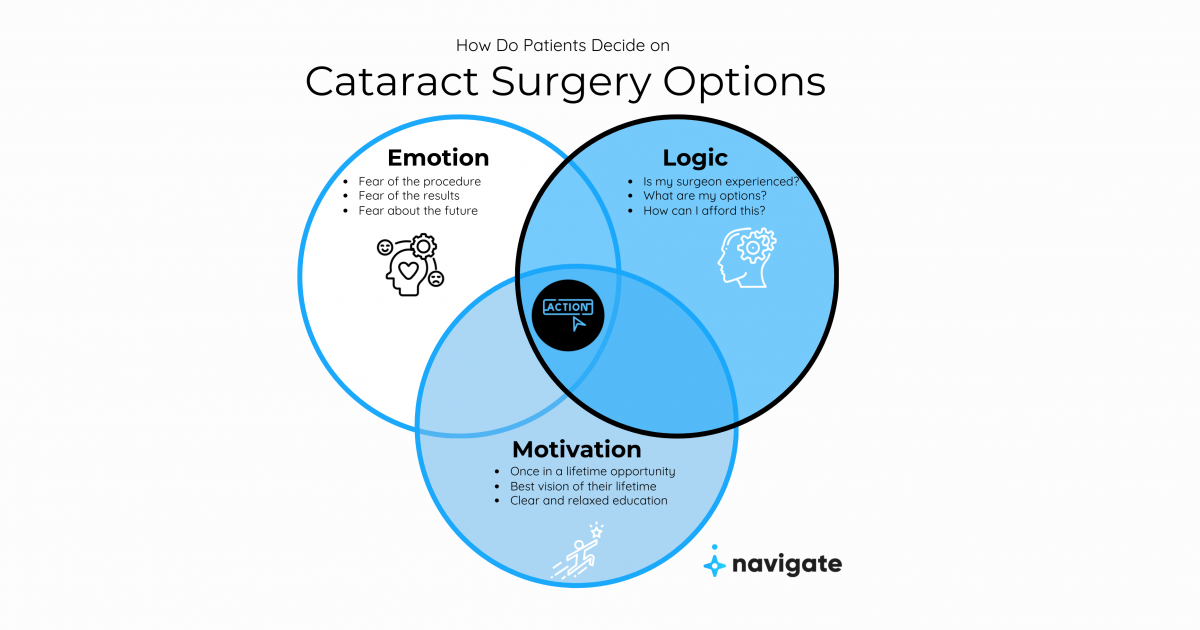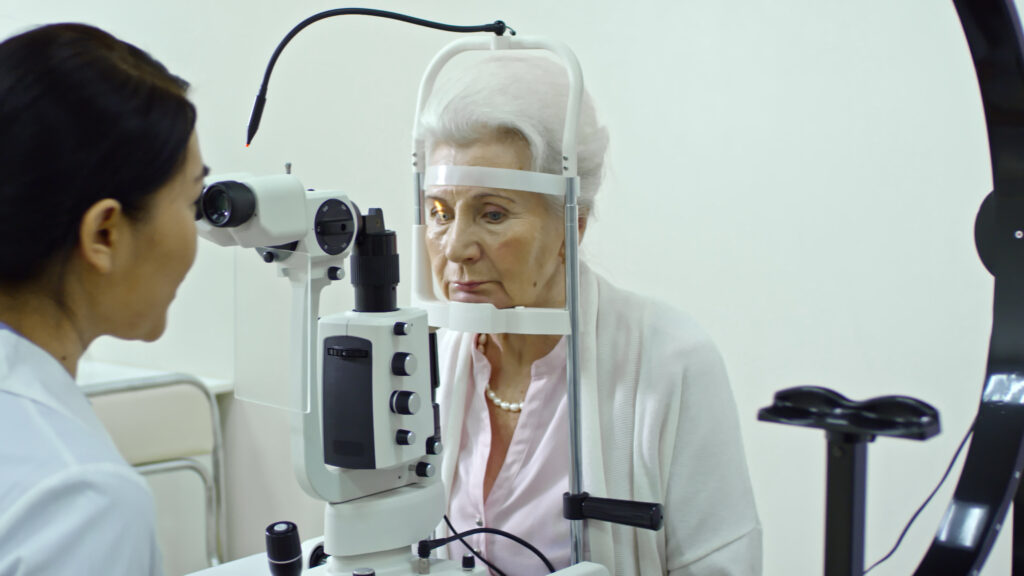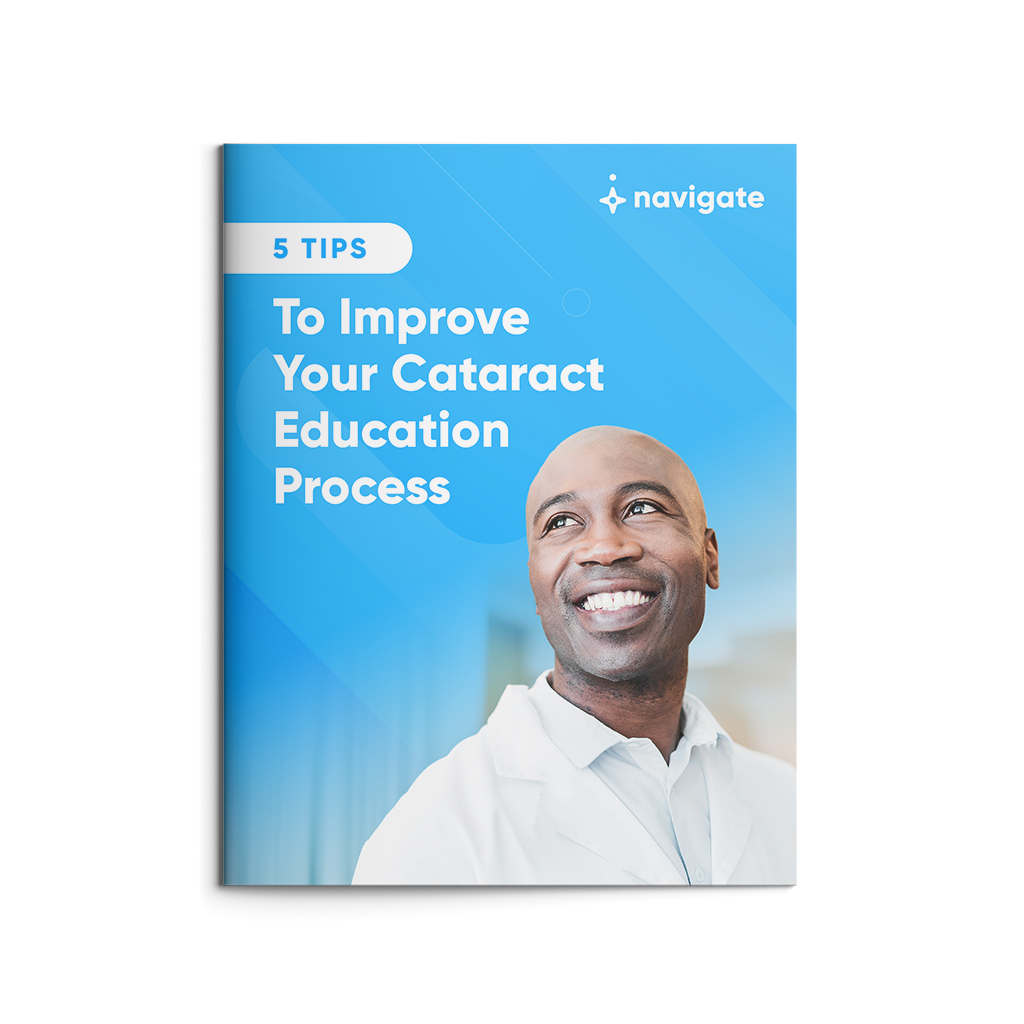Patients decide on cataract surgery based on logic, emotion, and motivation. Each plays a role in whether they move forward with surgery and what lens option they choose. Doctors and staff often focus on the facts. But facts alone aren’t enough. Patients also need time to process information and feel confident in their decision.
Pulling patient education earlier in the process gives them that time. They feel less pressure when they learn about their options before meeting with their surgeon. They can ask better questions and make a more informed decision. A clear and relaxed education process leads to better patient and practice outcomes.
Logic: Patients Need Clear Answers
Patients want to make smart decisions. They ask:
- Is my surgeon experienced? Trust is key. They need to feel confident in their surgeon’s skills and reputation.
- What are my options? Many don’t know about advanced lenses. They need simple visual comparisons to understand the benefits.
- How can I afford this? Cost is a big concern. Clear explanations of insurance, financing, and payment plans help ease financial stress.
Emotion: Addressing Patient Fears
Even with facts, emotions still shape decisions. Common fears include:
- Fear of the procedure. Surgery on the eyes is scary. A step-by-step explanation and patient success stories help ease anxiety.
- Fear of the results. Patients worry about disappointment. Setting clear expectations and focusing on benefits builds confidence.
- Fear about the future. Many see vision loss as losing independence. Showing how cataract surgery improves daily life helps shift this mindset.
Motivation: Tapping Into What Drives Patients
Beyond logic and emotion, motivation plays a significant role. Patients are excited about:
- A once-in-a-lifetime opportunity. Cataract surgery is a big moment. Framing it as an investment in their future encourages action.
- The best vision of their life. Many have worn glasses for years. The chance to see clearly without them is a powerful motivator.
- A stress-free education process. If education is rushed or confusing, patients hesitate. Teaching them early makes decisions easier.
Taking Action: Early Education Leads to Better Decisions
Understanding how patients think and feel is essential. But when they get information, matters as much. Logic, emotion, and motivation lead to action—but only when patients have time to process.
If education happens too late, patients feel rushed. They make decisions out of pressure instead of confidence. By pulling education earlier in the process, practices give patients time to think. They can consider their options, ask better questions, and feel sure about their choice.
Logic + Emotion + Motivation + Time = Confident Action.
Ophthalmology practices that follow this formula build trust, improve patient experience, and increase conversion rates. The result? More patients are getting the best vision of their lives.




